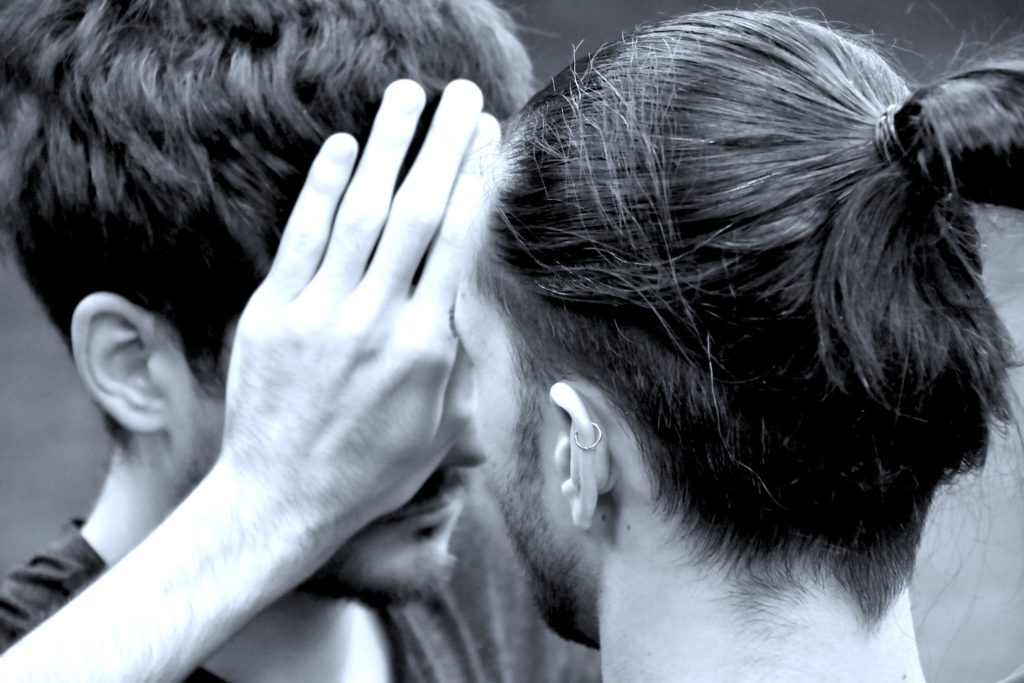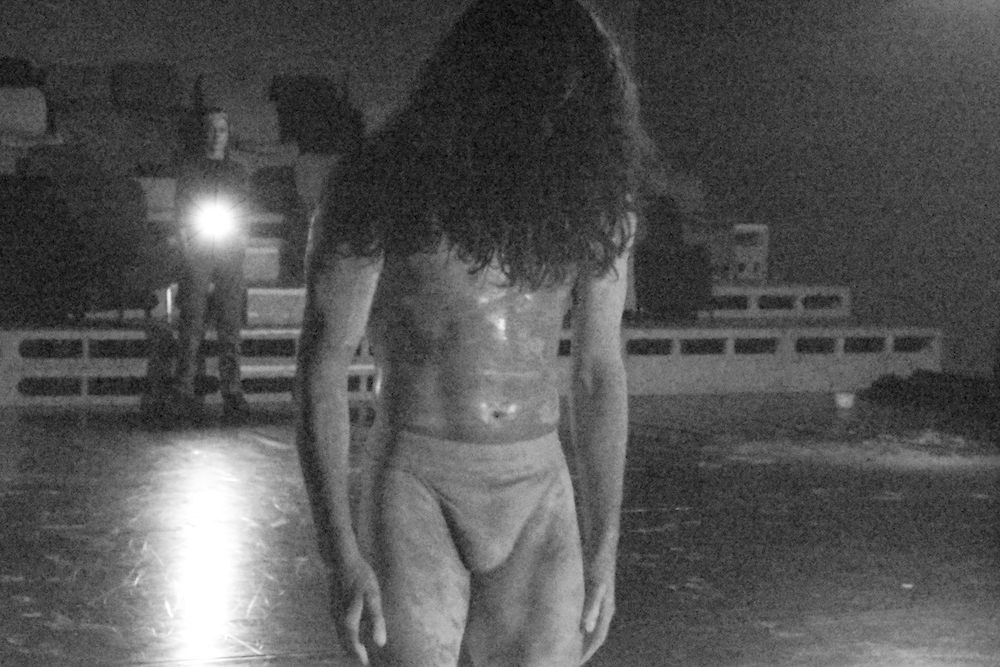- 2022.05.31. 19:30 - 21:30
In the past more than 20 years Márta LADJÁNSZKI is one of the creators/choreographers who has been performing in Bakelit MAC. Now she was preparing a unique eve where you can watch two performances creatd by her:
• E&A is re-premiering though the original work was created back in 2008
• EFFIGY was premiered for the invitation of Central Europe Dance Company in December 2021 but one had the chance to watch it in April in the frame of L1-eve(s) a’la IZP in Bakelit MAC already.
Márta Ladjánszki: E&A
reconstruction – premier
[May 31. 2022 19.30 Bakelit MAC]
Concept/Choreography/Light design: Márta Ladjánszki
Dancers: Ádám Bot and Attila Dániel
Music: montage
Music editor: Zsolt Varga
Costume: Butterfly
Light technician: Tamás Ladányi
Special thanks to the performers of the original work: Bea Gold and Andrea Lakat
Supported by L1 Association, EMMI, NKA Dance Department, Bakelit MAC
The piece was selected by our active spectators group, the qARTisans in the frame of the European project, Be SpectACTive! supported by the Creative Europe Programme and National Cultural Fund (NKA) Cultural Festivals’ Department.
www.martaatwork.com // www.L1.hu // www.bmac.hu
„Marta Ladjanszki always pays attention to the body, to the physical partnership and to the emotions in her pieces – with true purity.”
Emily & AlicE was a special creative process called statusM. In the series, I approached performers and co-creators with the goal of creating unique performances as a result of a short but focused work. There were 9 works in the series and each lived their own life after the show, including Emily & AlicE.
The original performance took place on October 31, 2008 in a white space furnished in the large hall of the then L1danceLab. The two invited performers, dancers (Bea Gold and Andrea Lakat), hadn’t worked together until then, but as a choreographer, I saw a lot of similarities and differences in them, which made it exciting to invite them into this work. Following the choreographic images and visions, a very intense and deep duet was born.
I had to wait long for the time this work – this intimacy, this focused togetherness, breathing together – could return. One motive went on for years and somehow made its way, but the duet itself was no longer in front of the audience.
As part of my jubilee series of performances and screenings. I rediscovered this work and asked two dancers (who happened to be around me in the past years) to recreate the piece that even I was getting to be familiar with (like anno Beus and Sellő). It’s very exciting to think about whether we can find together the kind of deep content I’m dreaming of for male bodies again. My intention is not to copy the moods that once existed, but to build on the memories and try to emphasize, underline situations and presentations, to refine the theme of the play.
Instead of two women and a kind of sisterhood, now two men will form a duet that will be born who know when and in what space.
And why did I choose Ádám Bot and Attila Dániel as the new performers?
• I have been quietly watching Ádám Bot for a while now, and I look forward to inspire each other in the co-creation. I consider him a pure-moving, sophisticated, understanding and sentient performer, but in the performances so far in which I have been fortunate to see him, I have always felt that I have not seen what he really was. I hope that during the rehearsals of E&A as a sculptor out of stone, I can carve what we don’t yet know about him as a dancer.
• I had a very fruitful work process with Attila Dániel, where he was convinced by his commitment to work, his ability and fresh insights, his young wisdom and in the last year I could really see his development and opening up, which I would like to continue with E&A.
Marta Ladjanszki’s pieces make me always to turn “inside”, and not because the pieces are turning inside. Much more because they are so much deep. The stories need huge attention from the audience either the themes are coming from such a deepness or they are questioning such themes. And of course the movements make me also to dive inside myself.” (Agota Sesztak)

Márta Ladjánszki // Közép-Európa Táncszínház: EFFIGY
premier: December 18. 2021. Bethlen téri Színház (in the frame of K-Arcok series)
Concept/director: Márta Ladjánszki
Choreographer: Márta Ladjánszki in cooperation with the performers
Dancer: Krisztián Barna
Composer/performer: Zsolt Varga
Light: Zoltán Fogarasi
Costume: Butterfly
Assistant: Renáta Joó
Visual help: István Kovács
Video documentation by Balázs Lajti aFilm.hu
Special thanks for those who helped our research during the workshop with their thoughts and movements, inspirational presence: Attila Dániel, Tímea Györke, Eszter Mórocz, Zsófia Szász, Flóra Veres; and László Árva who took pictures during our research.
Supported by Közép-Európa Táncszínház, L1 Association, National Cultural fund Hungary Dance Department, EMMI, Budapest Municipality
Effigy, looking at it from close: a portrait. Another image – differently. The etymological explanation of the word resonates with me, because I also think of the solo being made in this way as a resemblance, since who is on the stage is a nearly fictitious person. He feeds on and from Krisztián and appears on Krisztián’s body, so he is similar to him, but he is not one in one. The appearance of the word effigy was first documented in English in 1539, probably coming through French, originating in Latin effigies, meaning copy, image, resemblance, portrait and sculpture.
I like the explanation that there is a biblical association with this resemblance, for according to the Bible, God created man in his own image. And the painter compares the image of the model and his own idea and paints the result. Like us, in this solo. This is also supported by Krisztián’s hobby, namely painting, according to which the painter paints images. His portraits show not only faces but also destinies.
In our performance, the character will have an individual fate that is outlined – or not – that can be read by viewers – or not.
The burning of images is part of a number of rituals that signal the change of seasons, according to local traditions throughout Europe. The figures usually embody the “undesirable” forces of life (winter, previous year, witches, Judas) and, with their burning, signal and celebrate the annual cycle of life – death and rebirth – the defeat of winter and the return of spring. Most traditions are held around New Year’s Eve, at the end of the carnival, or the week before Easter.
www.martaatwork.com // www.cedt.hu

